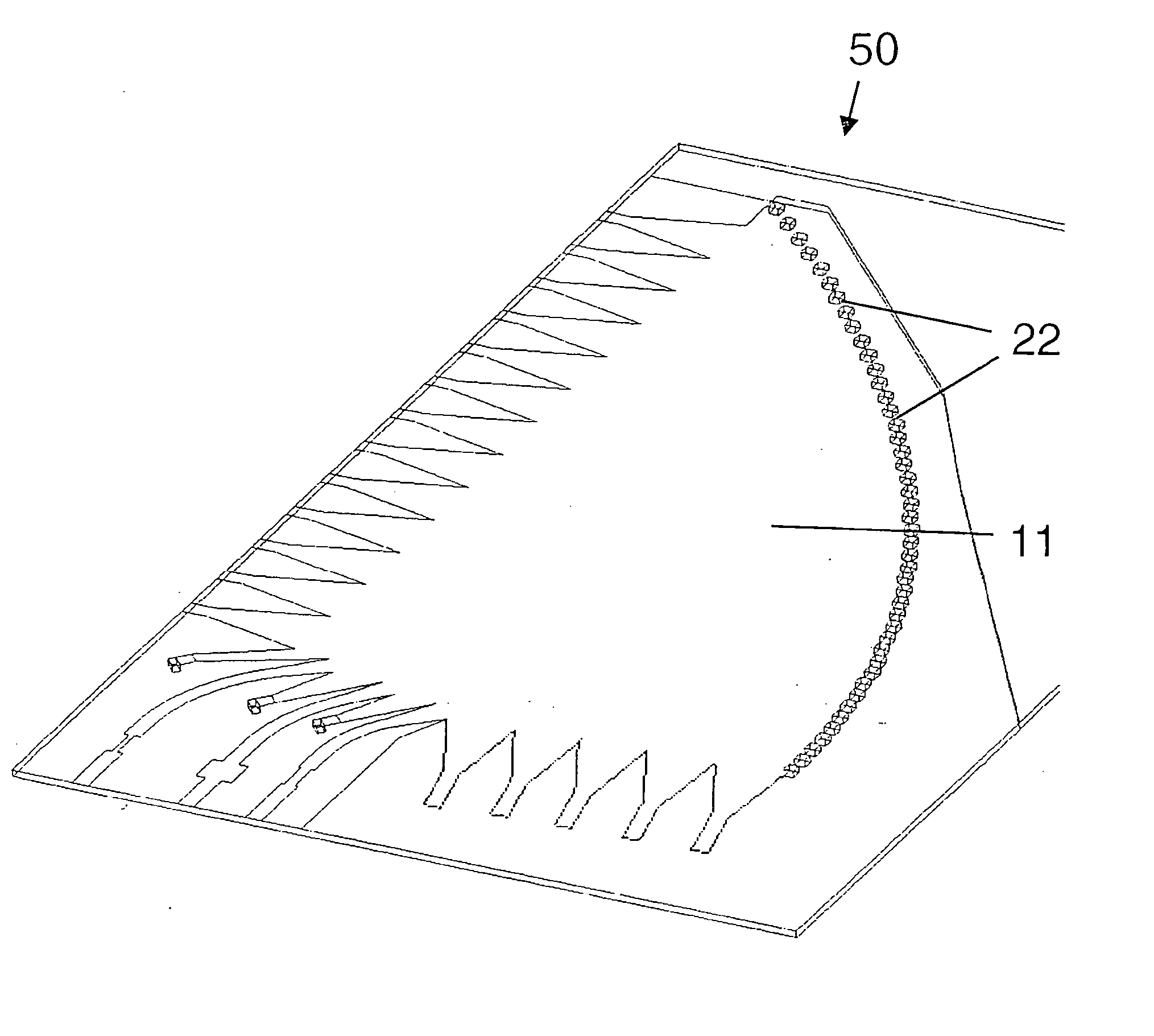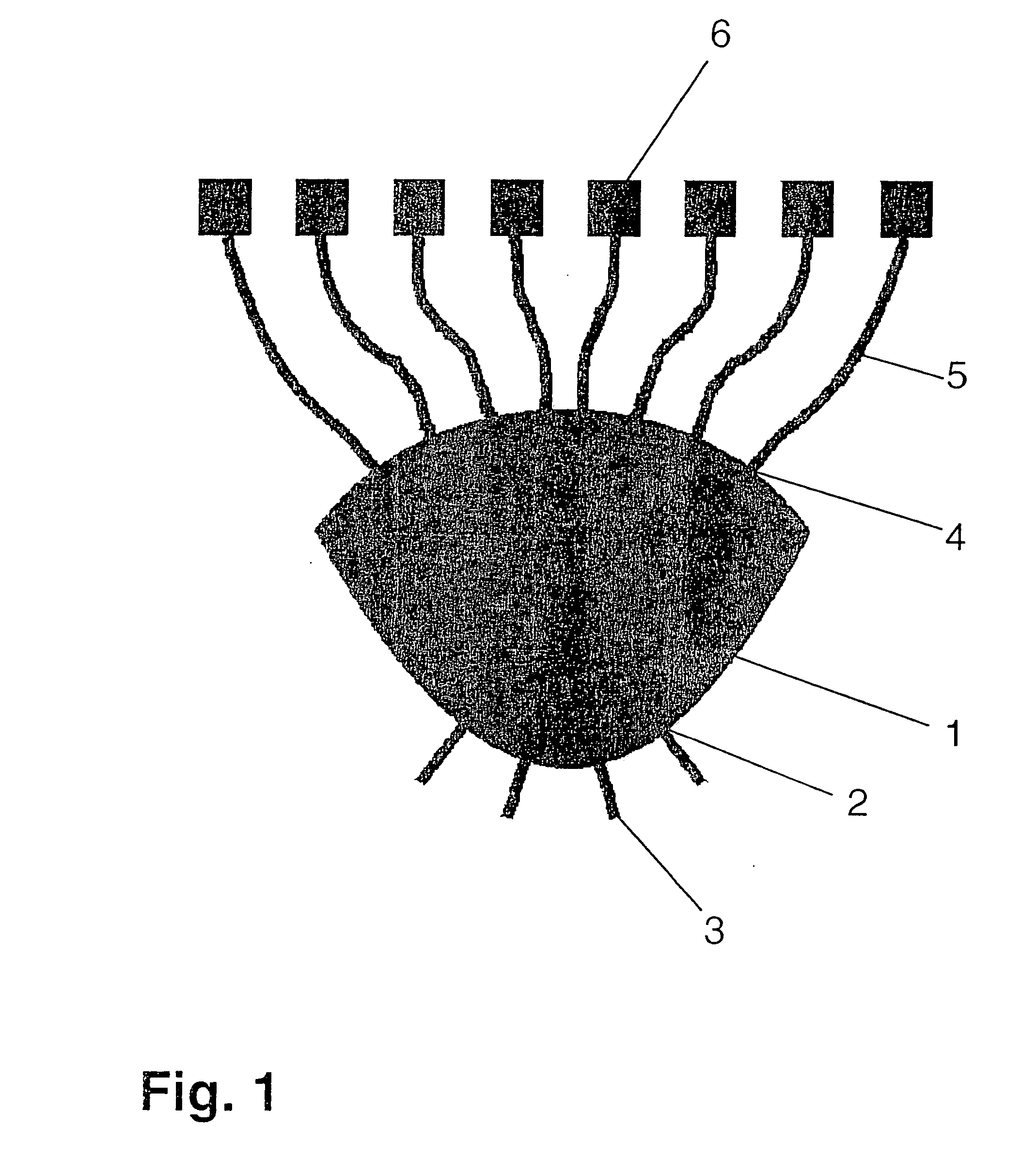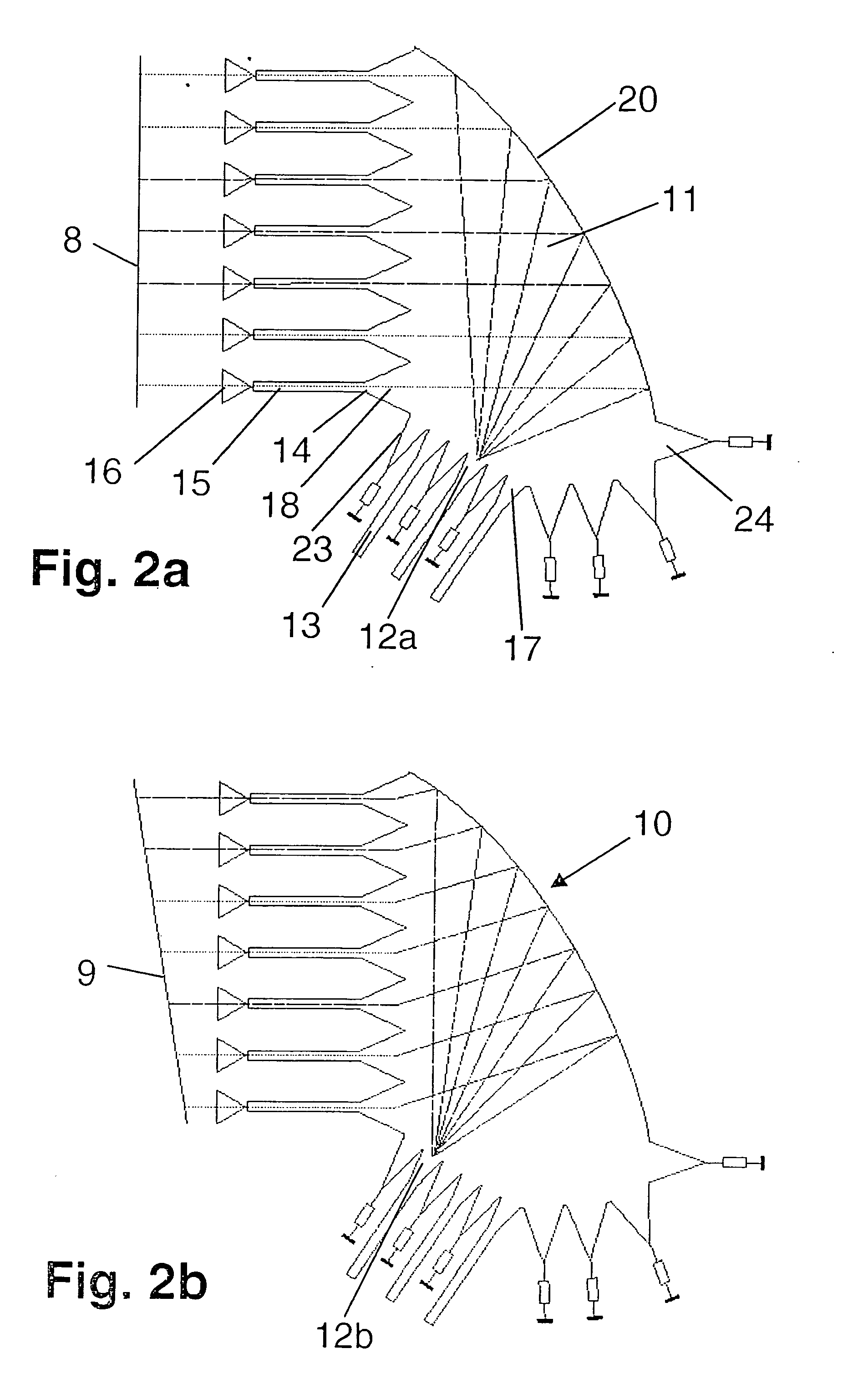Waveguide Structure
a waveguide and waveguide technology, applied in the field of waveguide structure, can solve the problems of large space requirements for parallel plate guides and equalizing conductors, unsuitable industrial applications for radar sensors, and relatively high losses in lenses, so as to achieve low-loss beam deflection and space-saving effects
- Summary
- Abstract
- Description
- Claims
- Application Information
AI Technical Summary
Benefits of technology
Problems solved by technology
Method used
Image
Examples
Embodiment Construction
[0024] The waveguide structure 10 shown in FIGS. 2a and 2b is used to create a phase gradient between the input signals of a system of antenna elements 16.
[0025] Waveguide structure 10 is implemented using microstrip technology, as used in the manufacture of inexpensive high-frequency circuits. In the simplest case, a single-layer microwave substrate made of ceramic material, glass or filled plastic and metal plated on both sides is used. Parallel plate guide 11 having beam lobe ports 12 for signal feed and signal pickup is created by structuring the upper surface, which constitutes the signal side of waveguide structure 10 and is shown here. The metal plated bottom side serves as the ground of waveguide structure 10 and may also be structured. According to the exemplary embodiment and / or exemplary method of the present invention, parallel plate guide 11 has a curved-shaped reflector contour 20 so that it functions as a signal reflector. The curvature of reflector contour 20 is app...
PUM
 Login to View More
Login to View More Abstract
Description
Claims
Application Information
 Login to View More
Login to View More - R&D
- Intellectual Property
- Life Sciences
- Materials
- Tech Scout
- Unparalleled Data Quality
- Higher Quality Content
- 60% Fewer Hallucinations
Browse by: Latest US Patents, China's latest patents, Technical Efficacy Thesaurus, Application Domain, Technology Topic, Popular Technical Reports.
© 2025 PatSnap. All rights reserved.Legal|Privacy policy|Modern Slavery Act Transparency Statement|Sitemap|About US| Contact US: help@patsnap.com



